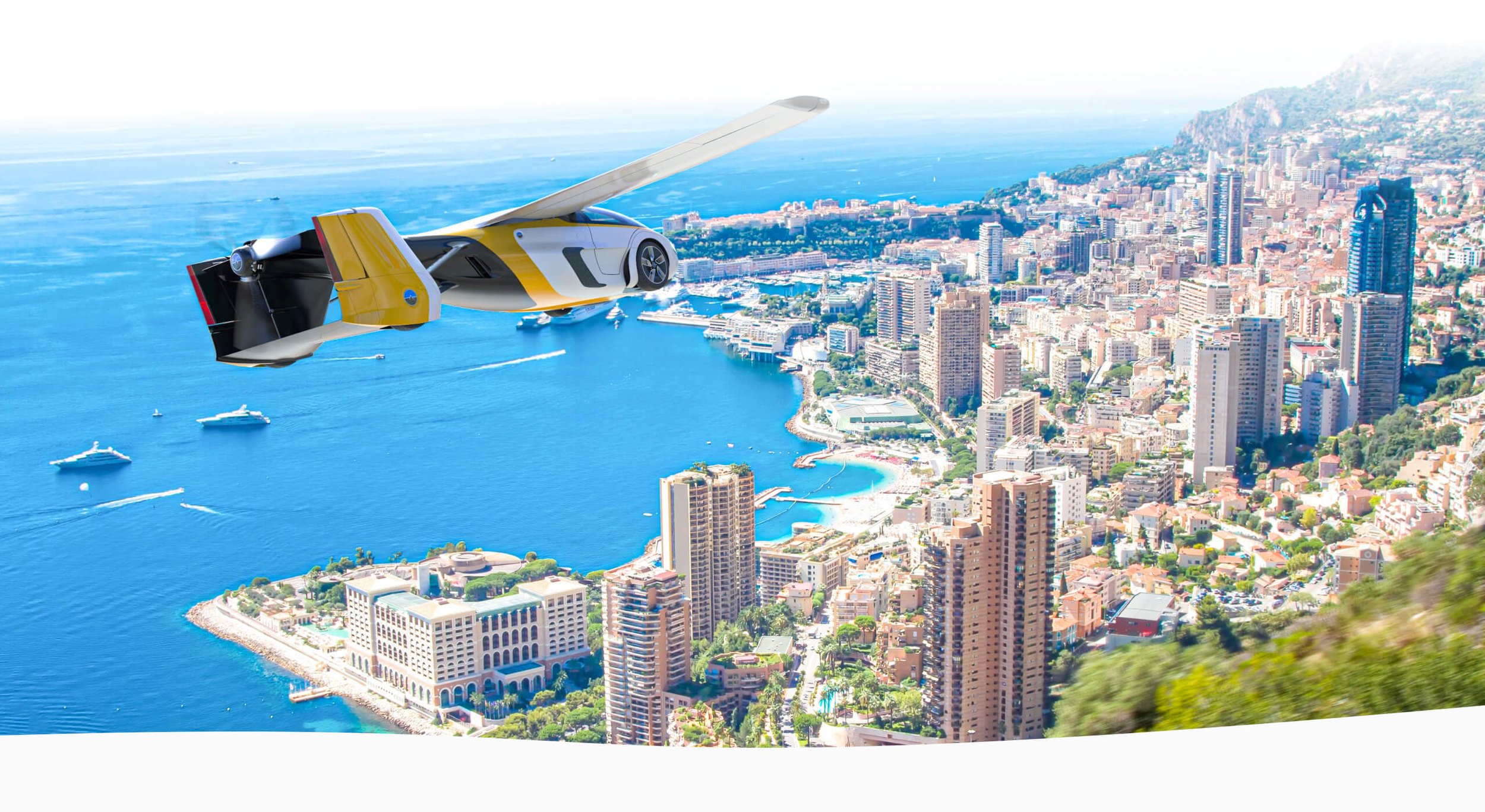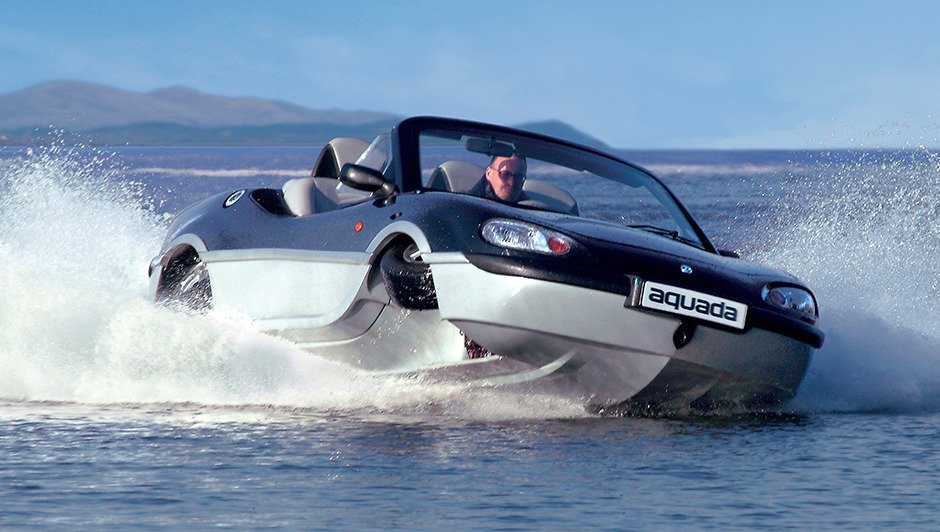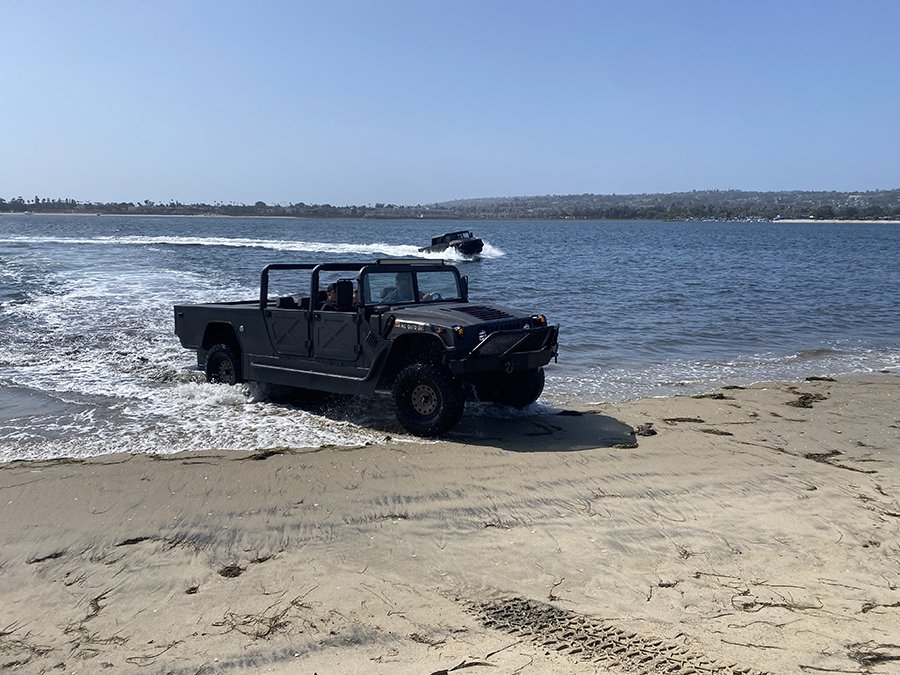These flying and floating cars won't stop when the road ends
Photo Aeromobil
If there’s one problem with a road trip it’s that it does rather rely on roads – or at least tracks that you can negotiate with a wheeled vehicle. But it doesn’t have to be that way if you’re bold enough to go beyond terra firma in a flying car or amphicar.
In truth these vehicles have never quite taken off, or made a splash if you prefer, as they’ve historically been the worst of both worlds. That could all change as new propulsion technologies promise that running out of road needn’t mean the end of your journey.
Let’s take a Detour into the past and a look into the future when, to quote Doc Brown from Back to the Future, “Where we’re going we don’t need roads!”
All at sea
The first, and arguably most successful, aquatic automobile was the Amphicar of 1961. Made by the Quandt Broup of West Germany the Amphicar Model 770 used a 1,200cc engine from a Triumph Herald (which the car itself resembled) to drive either the rear wheels or a pair of propellers. Almost 4,000 were sold and two even managed to negotiate the English Channel.
Also hailing from Germany was the Amphi-Ranger, developed in the 1980s as a Mercedes G-Wagen competitor that could also take to the water. I once spent an entertaining afternoon helming one along the river Isis among the punters of Oxford, while a few German police forces used them. It was crazily expensive, however, at more than £200,000 in today’s money and didn’t float enough peoples’ boats to stay in production beyond the 1990s.
Photo Enslin/Wikimedia Commons
Today, if you fancy an ocean drive then Britain’s Dutton, which has been making amphibious vehicles since the 1980s, will sell you a kit to build your own. The Reef is based on a Ford Fiesta, while the Surf uses a Suzuki Jimny as the donor vehicle. Gibbs Amphibians also makes a wide range of speedy sea-ready vehicles from quad bikes that convert to jet skis and trucks that take to the water. In California WaterCar claims to make “the most fun vehicle on the planet” in the form of its Hummer-derived H-1 Panther, but at almost half a million dollars you’ll need to have plenty of liquid assets to buy one.
The sky’s the limit
Science fiction has predicted flying cars for more than a century, but science fact still hasn’t caught up. It’s not been for want of trying though, with attempts dating back as far as 1917 when the Curtiss Aeroplane and Motor Company created its Autoplane. A car with removable biplane wings, tail and a propeller, the Autoplane never actually flew, however.
Photo San Diego Air & Space Museum
In 1940 Henry Ford said: “Mark my word, a combination airplane and motorcar is coming. You may smile, but it will come.” Ford only had to wait six years before the Convair 116 was revealed. It could fly at up 110mph and, once the wings, props and tail section were detached, it would chug along the roads at 60mph as well. Despite passing numerous flight tests it didn’t make it into production.
James Bond fans will remember Scaramanga making his escape from 007 in The Man with the Golden Gun, by quickly bolting a set of wings to his AMC Matador. Surprisingly this wasn’t a special effect, but actually a working prototype from AVE Mizar in California. Tragically the machine’s inventor and the company’s vice president were killed in a crash and the project died with them.
Photo United Artists
Now, though there’s real hope for a flying car future with companies such as AeroMobil, PAL-V and the Toyota-backed Joby Aviation getting ever closer to certification.
So perhaps one day soon the fabulous future that Doc Brown foresaw will finally arrive. Better late than never.










We raise a chapeau to the Frenchmen who drove the world in their Morgans back in 1994.